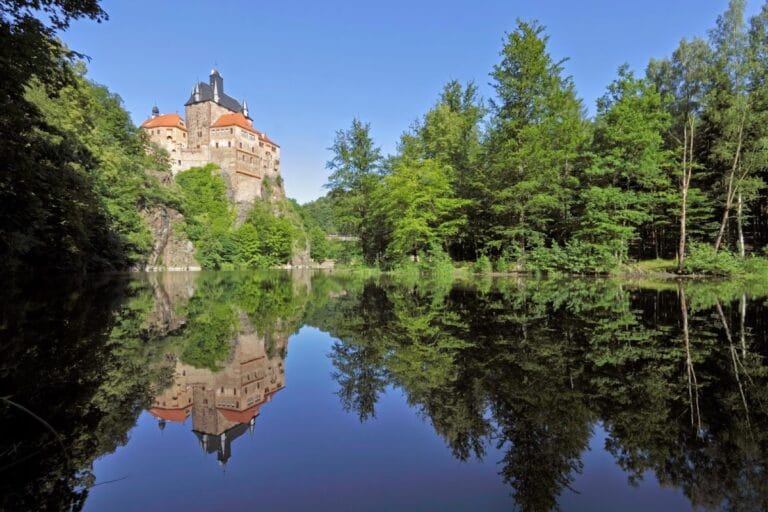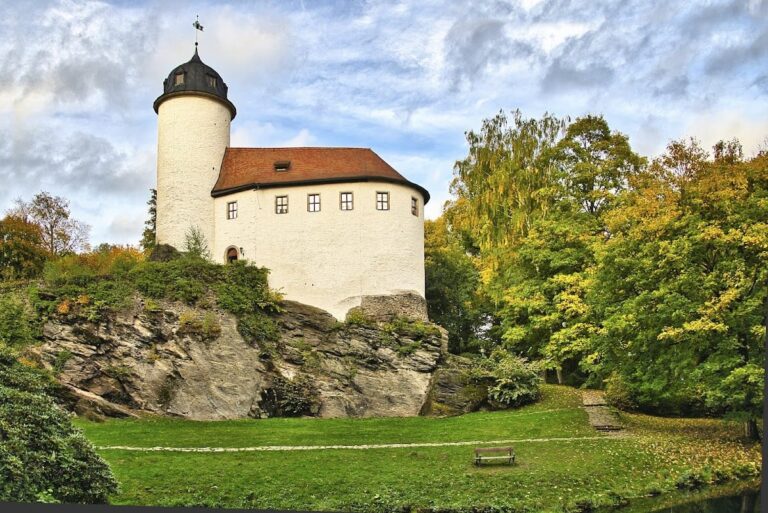Raubschloss Ringethal: A Medieval Castle in Mittweida, Germany
Visitor Information
Google Rating: 4.4
Popularity: Low
Google Maps: View on Google Maps
Official Website: de.wikipedia.org
Country: Germany
Civilization: Unclassified
Remains: Military
History
Raubschloss Ringethal is a former medieval castle situated on a rocky hill above the Zschopau River near the village of Ringethal, within the municipality of Mittweida, Germany. It was built by local nobility during the 13th century as a strategic hilltop stronghold.
The earliest written record of the site dates to the year 1221, when it served as the home of Ulrich von Ringenhagen, indicating its function as a seat of noble authority. Originally, the lordship connected to this family was based at Arnsberg, sometimes known as Einsiedelei, located within a bend of the Zschopau River. However, in 1315, the residence was deliberately moved to the more defensible position of what became known as Raubschloss Ringethal, reflecting a shift in the regional power center.
This lordship controlled not only the castle but also the surrounding agricultural communities of Falkenhain, Hermsdorf, and Erlebach. These villages were part of the territorial domain overseen by the castle’s occupants, underscoring its role in local administration and governance during the medieval period.
Throughout its history, the castle’s name evolved, with Burg Lewenhain appearing as an alternate designation. Documentation does not record any notable military engagements or religious affiliations linked to the site, but its status as a noble residence played a key part in the political landscape of the region during the Middle Ages.
Remains
The ruins of Raubschloss Ringethal reveal the characteristics of a spur castle, built atop a rocky promontory that commands a view over a bend in the Zschopau River. The core area of the castle is irregularly shaped, measuring roughly 15 by 22 meters and situated on an exposed rock plateau, emphasizing its strategic defensive placement.
Surrounding this core plateau are significant defensive earthworks. A section ditch, approximately 7 to 8 meters wide, lies around 8 meters below the core area, serving as a deep barrier to potential attackers. Alongside the ditch, an outer rampart about 5 meters in width encircles the site from the west through the north to the east. This earthwork fortification cleverly incorporates natural rock formations where possible, adapting the defenses to the rugged terrain.
Further out to the north and east, additional smaller ditches and ramparts provide layered protection, while to the south and southeast, precipitous natural slopes offered inherent defense. These features together created a formidable defensive network, leveraging both man-made and natural elements.
In the early 19th century, specifically in 1804, artificial ruins were constructed directly on the original core platform of the castle. This 19th-century intervention altered the appearance and fabric of the site’s remains, transforming parts of the original structure into romanticized ruins, a practice common during that period.
Today, the remnants of Raubschloss Ringethal remain in situ, allowing visitors to observe the extensive earthworks and enjoy panoramic views of the Zschopau River loop below. Informational signs provide context about the site’s historical importance. The layers of defensive ditches and ramparts, together with the rocky plateau, clearly testify to its medieval origin and strategic design.










